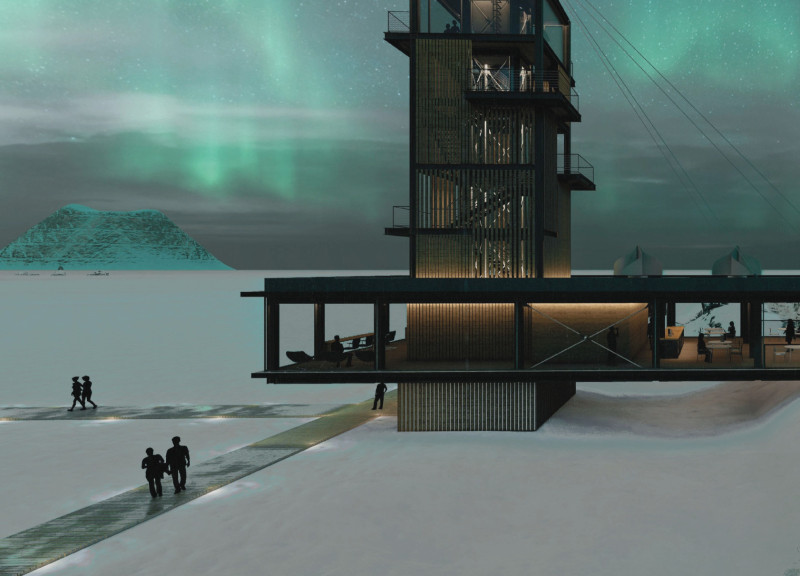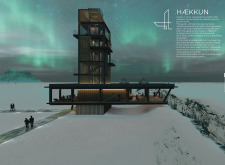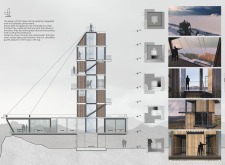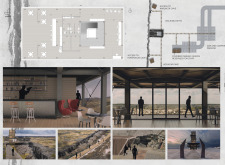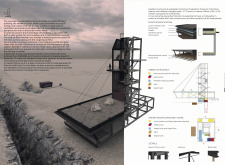5 key facts about this project
The primary function of the Haekkun Tower is to offer a space for relaxation, reflection, and exploration. The layout is organized vertically, with dedicated areas at each level that cater to various activities, including observation, dining, and relaxation. The project's design emphasizes an experiential journey as occupants move through the structure, gaining different perspectives of the surrounding environment.
Unique Design Approaches and Sustainability
The Haekkun Tower employs distinctive design approaches that set it apart from conventional structures. Its vertical organization promotes a dialogue with the landscape, allowing sunlight and natural elements to play a significant role in the user experience. Large glass windows frame the views, reinforcing the connection between the interior and exterior spaces.
Attention to materiality is a key aspect of the design. The use of wood, steel, and glass creates a harmonious balance between durability and aesthetic appeal. Wood is utilized for its warmth, while steel provides structural integrity. The inclusion of crushed rocks in the roofing contributes both functionally and visually, adding to the overall character of the project.
Sustainability is woven into the fabric of Haekkun Tower. The structure incorporates renewable energy sources such as wind turbines and heat pumps, optimizing its energy consumption. Rainwater collection systems further enhance the building’s self-sufficiency, allowing it to effectively operate within the harsh Icelandic climate.
Interior Spaces and Community Interaction
Within the Haekkun Tower, interior spaces are designed to encourage social interaction while also offering areas for solitary contemplation. The open layout fosters communal gathering, featuring strategically placed seating and varying levels of privacy. These design considerations enhance the overall visitor experience, making it adaptable to different needs and occasions.
The tower also facilitates access to surrounding attractions, including walking paths leading to nearby geological features. This approach not only promotes exploration but also reinforces the project’s commitment to environmental integration, ensuring that visitors engage with the natural beauty of the region.
In summary, the Haekkun Tower presents an architectural design that is both functional and environmentally conscious. Its innovative use of materials, commitment to sustainability, and focus on user experience position it as a notable project within contemporary architecture. To explore the architectural plans, sections, designs, and ideas further, readers are encouraged to view the project presentation for comprehensive insights into this unique structure.


